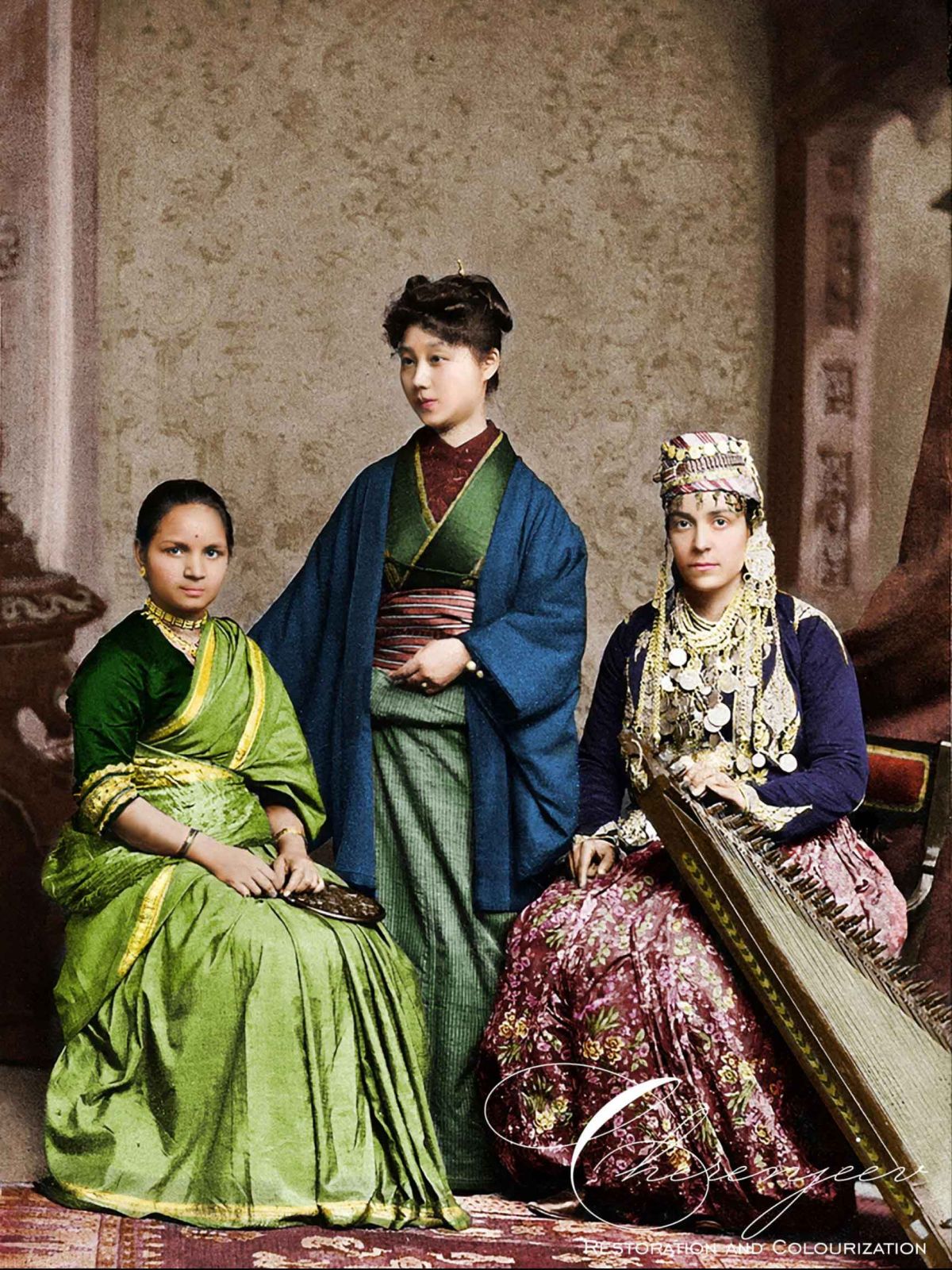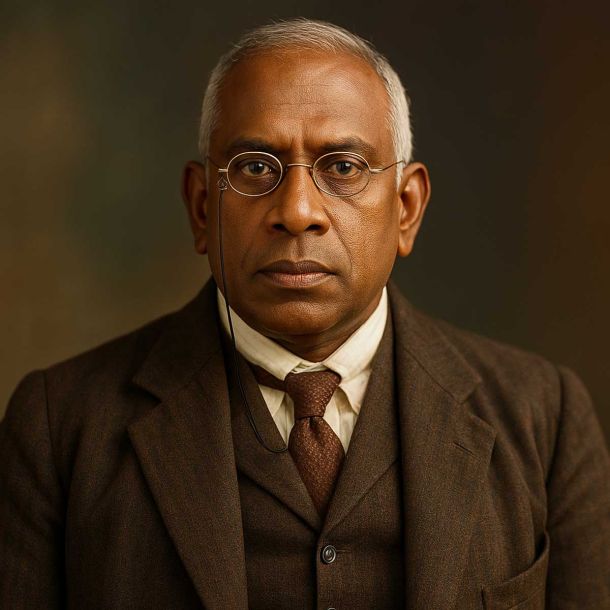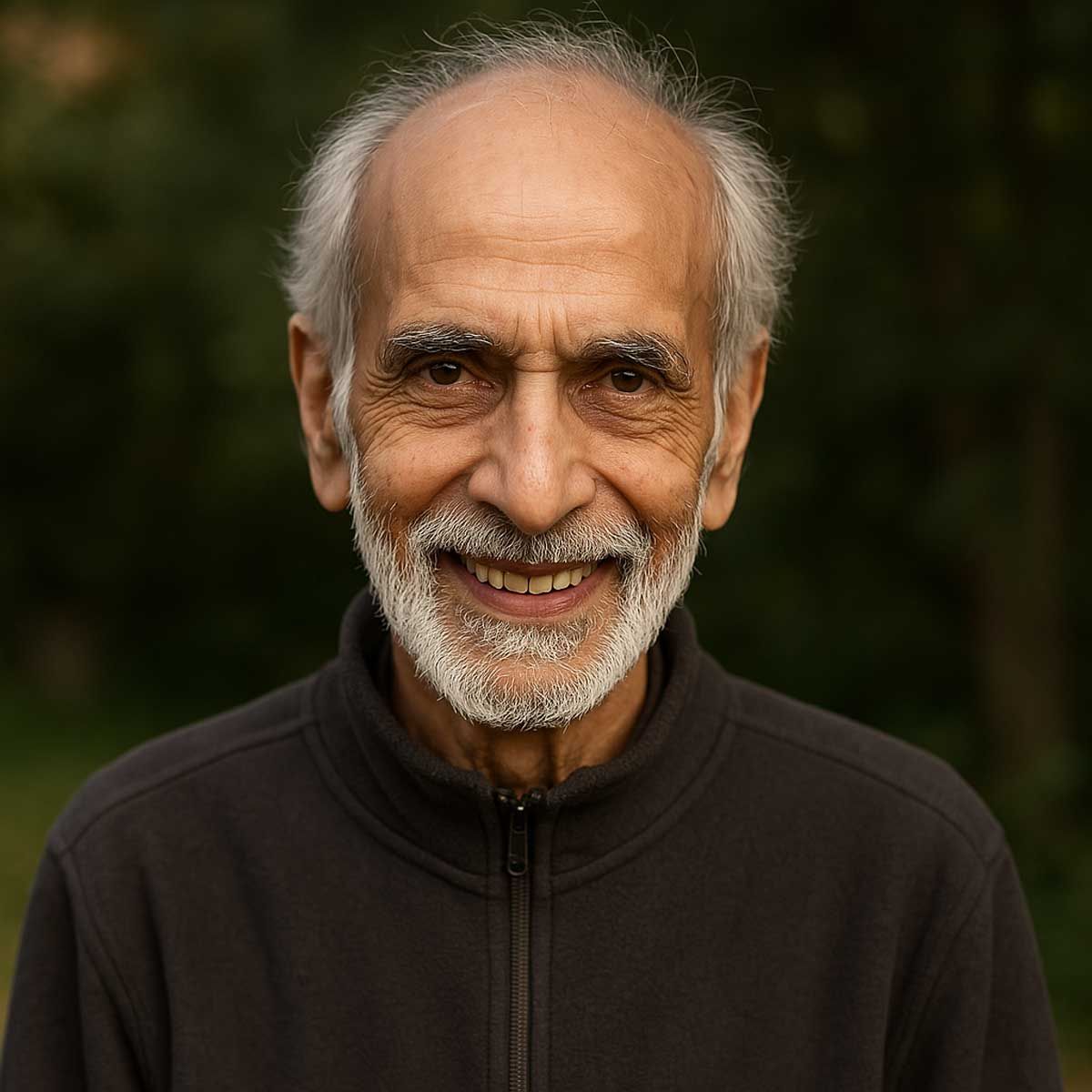Sanatan Articles
Satyaagrah
Written on
Satyaagrah
Written on
Satyaagrah
Written on
Satyaagrah
Written on
Satyaagrah
Written on
JOIN SATYAAGRAH SOCIAL MEDIA
Dr. Anandibai Joshi, India's first female physician, embraced 19th-century challenges with courage and determination, securing a medical degree in the U.S. and setting a monumental precedent for women's education and empowerment across generations

Dr. Anandibai Gopalrao Joshi emerged as a pioneering figure in the annals of South Asian history, distinguishing herself as one of the first Indian and South Asian female physicians trained in Western medicine. Not only did she break cultural barriers, but she also became the first Indian woman to step onto American soil to receive a professional education and graduate in medical science, setting a precedent for future generations.
Born as Yamuna Joshi on March 31, 1865, into an affluent Hindu Brahmin family in Kalyan, Maharashtra, her life initially followed the tranquil paths of wealth. Her family, orthodox yet prominent landowners, navigated through societal norms with their status. However, their fortunes dwindled, leading to a significant turning point in Yamuna's life. At the tender age of nine, she was married to an older widower, Gopalrao Joshi, who was twenty years her senior. This marriage, steeped in traditional customs, led to her name being changed to Anandibai, marking a new chapter in her life.
A Husband’s Vision and Anandibai’s Transformation
Gopalrao Joshi, a postal clerk by profession, was unusually progressive for his time. He was a fervent advocate for women’s education and insisted on educating Anandibai as a precondition of their marriage. Under his guidance, Anandibai began learning English, a skill he deemed crucial for navigating the wider world. This decision was inspired by the writings of Gopal Hari Deshmukh, a prominent social reformer known for his contributions to Marathi literature through works like Lokhitawadinchi Shatapatre. These writings, which advocated for social reform, played a pivotal role in shaping Gopalrao's educational priorities for Anandibai.
Despite the common use of Sanskrit among Brahmins, Gopalrao’s emphasis on English highlighted its importance as a tool for broader influence and empowerment. Anandibai thrived under her husband's tutelage, showing remarkable aptitude and progress in her studies. However, a personal tragedy struck when she was just fourteen; she gave birth to a boy who tragically passed away after only ten days due to inadequate medical care. This heart-wrenching experience profoundly impacted her, igniting a steadfast determination to pursue medical education.
|
Gopalrao's Quest for Anandibai's Education
Gopalrao faced significant challenges in securing admission for Anandibai at American universities. Many of their offers were contingent on the couple converting to Christianity, a requirement that was unacceptable to them as orthodox Brahmins. During this period, Theodicia Carpenter of Roselle, New Jersey, became aware of their struggle through an article published in the Missionary Review. Moved by Anandibai’s determination to pursue a medical career and Gopalrao's supportive stance, Mrs. Carpenter reached out, leading to a series of correspondence between her and Anandibai.
In their letters, Anandibai treated Mrs. Carpenter almost as an aunt, sharing her thoughts on various social issues including early marriages, women’s health, the Hindu religion, and the status of women in India. She also expressed her views on enforcing the ‘sati’ ban in cases of child marriages.
Over time, Anandibai’s health had suffered, marked by episodes of fever and weakness. Compassionately, Mrs. Carpenter sent medicines from America to aid her. By 1883, when Gopalrao was posted to Serampore in West Bengal, he decided to accept Mrs. Carpenter’s generous offer of accommodation for Anandibai so she could pursue her education in the United States. This decision, however, was not met kindly by their community; the couple faced harassment, with locals throwing stones and cow dung at their home.
Despite the societal backlash, Anandibai took a bold stand. She addressed the community at Serampore College Hall, explaining her decision to study in America. She shared the personal tragedy of losing her son, which underscored her motivation to become a doctor. Anandibai articulated the crucial need for Hindu female doctors in India and shared her vision of opening a medical college for women upon her return. She assured the community of her steadfast commitment to her Hindu Brahmin roots and her decision not to convert to Christianity. Her compelling speech not only gained her public support but also financial contributions from across India, including Rs 200 from the Viceroy of India, the Marquess of Ripon.
Medical Education in the United States of America
Gopalrao, demonstrating his unwavering commitment to his wife's education, remained in India while Anandibai embarked on a monumental journey to America, escorted by American missionary women. After a lengthy voyage from Calcutta to New York by ship, Anandibai was warmly welcomed by the Carpenters upon her arrival. Though she found many aspects of her new surroundings unusual, Mrs. Carpenter embraced her as a daughter, easing her transition into this foreign land.
Anandibai's resolve led her to apply to the Medical College of Pennsylvania, known for being the first women’s medical program in the world. Her application, reflecting her determination and the challenges she faced, deeply impressed the college's Superintendent and Secretary. An excerpt from her letter highlights her motivation:
"[The] determination which has brought me to your country against the combined opposition of my friends and caste ought to go a long way towards helping me to carry out the purpose for which I came, i.e. to render to my poor suffering country women the true medical aid they so sadly stand in need of and which they would rather die than accept at the hands of a male physician. The voice of humanity is with me and I must not fail. My soul is moved to help the many who cannot help themselves."
Inspired by her dedication, the university swiftly accepted her application and enrolled her into their medical program, also awarding her a $600 scholarship for her education.
Adjusting to life in the U.S. posed its unique challenges for Anandibai, who was Maharashtrian by birth and used to the traditional saree that exposed her waist and calves. As the colder winter months approached, she struggled with the frigid temperatures. After considerable thought, and influenced by the teachings of the Bhagavad Gita which philosophizes that the body is merely a covering for the soul, she adapted her attire to the Gujarati style of saree draping, which offered more coverage.
Despite these adjustments, Anandibai's health began to decline due to the cold weather and inadequate heating in her accommodation. Two years into her medical studies, her condition worsened significantly, marked by sudden fainting spells, high temperatures, and persistent coughs, highlighting the physical toll her educational pursuit took on her.
|
Graduation in Medical Science
Anandibai's academic journey culminated triumphantly when she presented her thesis, entitled 'Obstetrics among the Aryan Hindoos', and obtained her MD degree on March 11, 1886. This event was marked by the attendance of her supportive husband, Gopalrao, and the esteemed social reformer and education pioneer, Pandita Ramabai. During her graduation ceremony, as the first woman doctor of India, Dr. Anandibai received a standing ovation, a testament to her groundbreaking achievements in the field of medicine. Adding to her accolades, Queen Victoria sent a congratulatory message, recognizing her significant accomplishments.
Despite the accolades and recognition, Dr. Anandibai's health was in a precarious state. She was diagnosed with tuberculosis, which, fortunately, had not yet affected her lungs. Given her deteriorating health, she made the decision to return to India.
Upon her return in late 1886, Dr. Anandibai was welcomed as a hero. The princely state of Kolhapur recognized her medical prowess and appointed her as the Lady Doctor in charge of the female ward at Albert Edward Hospital. However, her journey back was fraught with challenges; the ship's duty doctors refused to provide treatment to a ‘brown’ woman, highlighting the racial prejudices of the time. Even after arriving in India, she faced further neglect from the medical community. A renowned Ayurvedic specialist in Poona refused to treat her, citing her transgression of societal boundaries as his reason.
Dr. Anandibai Joshi's life came to a premature end as she succumbed to tuberculosis on February 26, 1887, just shy of her twenty-second birthday. Her death was deeply mourned across India, reflecting the impact she had made on her country and beyond. In a final tribute, her ashes were sent to Mrs. Carpenter in the USA and were laid to rest in her family cemetery in Poughkeepsie, New York, symbolizing the profound connection and respect that transcended continents. Dr. Anandibai's legacy continues to inspire countless women in India and around the world, serving as a beacon of resilience, determination, and the pursuit of education against all odds.
Dr. Anandibai Joshi's untimely death meant that she could not practice medicine, yet her indelible mark on Indian society endures. Her journey resonates with the profound changes she helped initiate towards a more progressive India. Dr. Anandibai transcended the societal norms of her time, becoming a doctor against formidable odds, supported unwaveringly by her husband, Gopalrao. His encouragement was not just personal but a radical endorsement of women’s education and empowerment during an era when such ideas were far from mainstream.
Through her correspondence with Mrs. Carpenter, Anandibai's thoughts and opinions were recorded, allowing people worldwide to gain insight into her extraordinary character and intellect. She remains a beacon of inspiration for young girls, proving that with determination and resilience, no dream is unattainable. Anandibai's legacy continues to inspire countless young women in India and beyond, encouraging them to pursue their dreams regardless of the obstacles. Her life and achievements exemplify the spirit of feminism, advocating for equal opportunities and rights for women.
|
Honours
Dr. Anandibai Joshi's groundbreaking achievements have been recognized and celebrated in various forms. She was the first Indian woman to be offered the position of Lady Doctor in Kolhapur, a testament to her skill and determination. The Institute for Research and Documentation in Social Sciences (IRDS) in Lucknow honors her memory with the annual Anandibai Joshi Award for Medicine, celebrating women's contributions to the medical field. Furthermore, the Maharashtra Government awards fellowships in her name to young women working on women's health, continuing her legacy of empowering women through education and opportunity.
Publications and Media
Dr. Anandibai's life has been the subject of various publications and adaptations, each highlighting different aspects of her remarkable journey. Caroline Wells Healey Dall authored a biography in 1888, providing contemporary insights into Anandibai's life. Indian television has also played a role in popularizing her story; Doordarshan broadcasted a play titled 'AnandiGopal', directed by Kamlakar Sarang, which dramatized her life story. Additionally, a fictional Marathi novel by Shrikrishna Janardan Joshi delves into her struggles and achievements, further immortalized in a play adaptation by Ram G. Joglekar. These works collectively contribute to the enduring legacy of Dr. Anandibai Joshi, ensuring her story continues to inspire and educate future generations.
 |
Sources:
- Pooja Thakar, ‘Anandi Gopal’, Women in Science, LD_Essays 13-16.
- www.thebetterindia.com/10305/lesser-known-facts-behind-india-first-lady-doctor-anandi-joshi
- Pallavee Amdekar, February 2013, ‘Dr.Anandibai Joshi’, India Unlimited.
- Meera Kosambi, December 1996, ‘Anandibai Joshee’, Economic and Political Weekly, No.49.
- S.J.Joshi, 1968, ‘Anandi Gopal’.
- http://biswaprasun.blogspot.in/2012/03/anandibai-joshi-first-lady-doctor-of.html
 Support Us
Support Us
Satyagraha was born from the heart of our land, with an undying aim to unveil the true essence of Bharat. It seeks to illuminate the hidden tales of our valiant freedom fighters and the rich chronicles that haven't yet sung their complete melody in the mainstream.
While platforms like NDTV and 'The Wire' effortlessly garner funds under the banner of safeguarding democracy, we at Satyagraha walk a different path. Our strength and resonance come from you. In this journey to weave a stronger Bharat, every little contribution amplifies our voice. Let's come together, contribute as you can, and champion the true spirit of our nation.
 |  |  |
| ICICI Bank of Satyaagrah | Razorpay Bank of Satyaagrah | PayPal Bank of Satyaagrah - For International Payments |
If all above doesn't work, then try the LINK below:
Please share the article on other platforms
DISCLAIMER: The author is solely responsible for the views expressed in this article. The author carries the responsibility for citing and/or licensing of images utilized within the text. The website also frequently uses non-commercial images for representational purposes only in line with the article. We are not responsible for the authenticity of such images. If some images have a copyright issue, we request the person/entity to contact us at This email address is being protected from spambots. You need JavaScript enabled to view it. and we will take the necessary actions to resolve the issue.
Related Articles
- Madras High Court: Do not take decision on melting Temple gold till Trustees are appointed
- Cross Agent and the hidden truth of massacre of Jallianwala Bagh - Martyrdom of Shaheed Bhagat Singh (Some Hidden Facts)
- "I had a calling to become what I became - I was created to do this": Srinivasa Ramanujan, mathematical genius who knew infinity credited his all formulae to visions of Mahalakshmi, "An equation for me has no meaning, unless it expresses a thought of God"
- “Architecture should speak of its time and place, but yearn for timelessness”: Beautiful Mandore Garden located in the city of Jodhpur, Rajasthan known for its rich history, stunning architecture, and lush greenery, making it a popular tourist destination
- Jhalkaribai: The Indian Rebellion Of 1857 Who Took on British Forces Disguised as Laxmibai
- Letter to Shaheed Sukhdev 5th April, 1929 - Collected work of Shaheed Bhagat Singh and his Co-patriots
- Northeast is not the Part of Pakistan because of 'Netaji': Subhas Bose and the ‘special’ case of Assam
- Pt. Madan Mohan Malaviya’s independent ‘Note’ to the Industrial Commission of 1916: India’s Industrial Heritage
- When Nehru ignored warnings from Sardar Patel and Sri Aurobindo and shocked USA President: Chinese Betryal and loss of centuries old ally
- Unsung Heroine Pritilata Waddedar, Who Shook The British Raj at the age of 21
- The Lost City of Dwarka and step-motherly treatment to it's Archaeological excavations as revealed by RTI: Shocking state of neglect for Hindu sites by the Government
- Gandhi emphasized that he won't salute Indian National Flag if Charkha is replaced by Ashoka Chakra and wanted British flag added to it
- How Communism murdered Freedom of Expression: 100 Years of Russian Revolution
- Godse's speech and analysis of fanaticism of Gandhi: Hindus should never be angry against Muslims
- Depth of Soviet penetration in Indian media is exposed through declassified CIA document from 2011





















